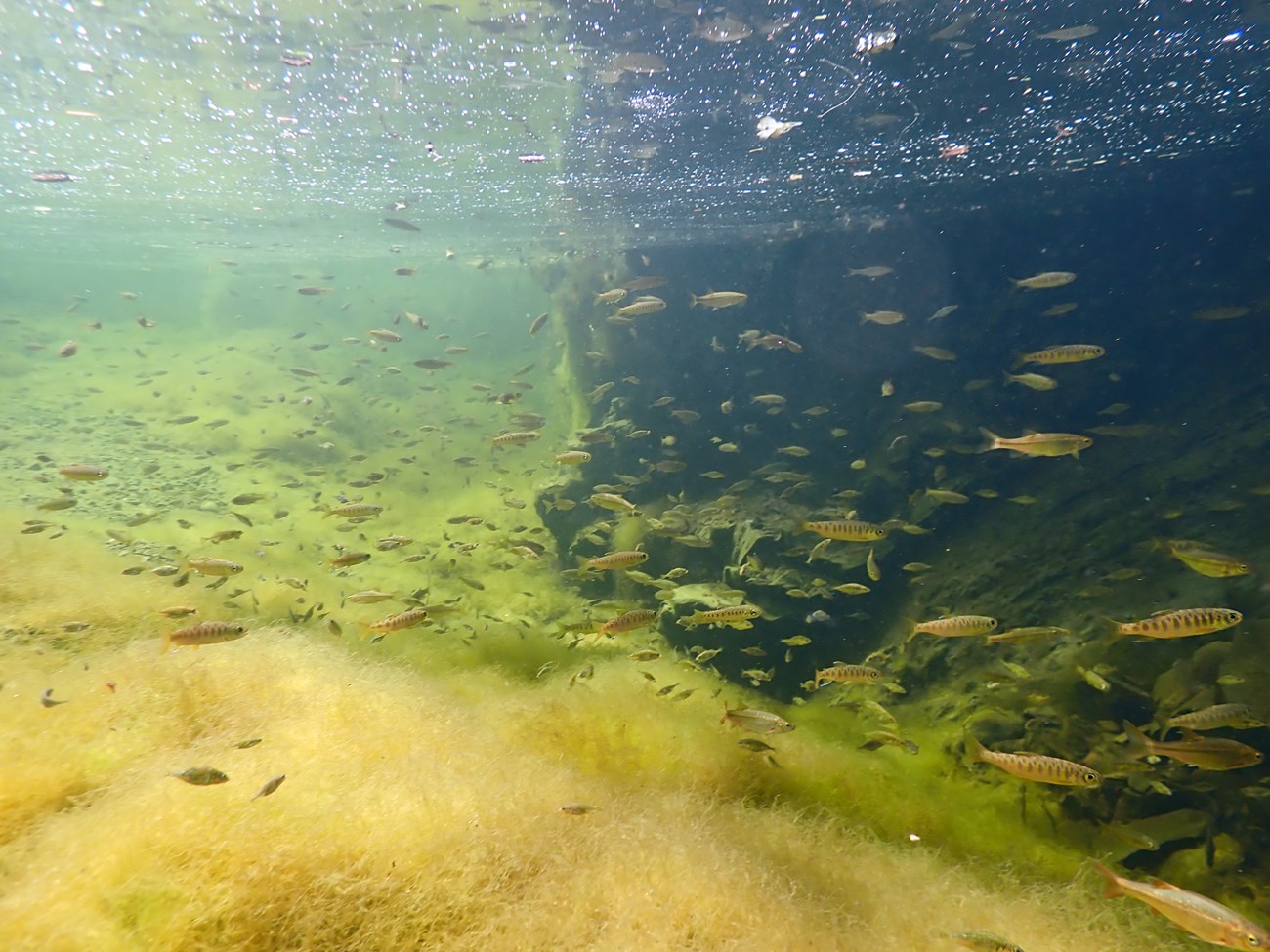Last updated: November 15, 2022
Article
Meet the 2022-2023 Watershed Stewards & Summer Basinwide Surveys Conclude
By Watershed Stewards Program Corpsmembers Elizabeth Bear and Catherine Masatani, San Francisco Bay Area Network Salmonid Monitoring Program

Watershed Stewards Program Corpsmember Tara Blake / NPS
October/November 2022 - The San Francisco Bay Area Network coho and steelhead monitoring crew is excited to welcome the 2022-2023 Watershed Stewards Program Corpsmembers! The Watershed Stewards Program (WSP) in partnership with Americorps aims to improve watershed health by engaging in restoration science, civic service, and community education while empowering the next generation of natural resources professionals. WSP Corpsmembers serve at placement sites across California, from the Santa Monica Mountains up to Yreka, for 10.5 months.
While at their placement sites, WSP Corpsmembers collect watershed data and work on restoration initiatives. They also provide watershed education to K-12 students at lower-income public schools and recruit volunteers within their placement site communities for watershed improvement projects. Some key program accomplishments during 28 years of program service include: inventorying more than 45,058 miles of streams and riparian areas, developing more than 1,940 watershed awareness events which have engaged more than 28,806 community volunteers, and instructing more than 54,232 students in watershed science and conservation.
WSP Corpsmembers Elizabeth Bear and Catherine Masatani will work at Point Reyes National Seashore and Golden Gate National Recreation Area until August 2023, aiding in salmon population recovery on Olema, Redwood, and Pine Gulch creeks. Catherine has a B.S. in Fisheries Biology from Cal Poly Humboldt. Prior to her WSP term, Catherine was working in the Monongahela National Forest in West Virginia conducting native brook trout surveys. She is excited for her term at Point Reyes and the opportunity to work with endangered salmonid populations. Elizabeth has a B.S. in Natural Resources Management from Clemson University. She was previously working with the National Park Service at Point Reyes to assist in invasive plant mapping and removal following the Woodward Fire in 2020. She is excited to deepen her understanding of the local ecology and gain hands-on fisheries and stream restoration experience during her WSP term.
The first task as incoming WSP Corpsmembers is reviewing summer basinwide habitat typing data and making sure everything lines up. What is habitat typing you might ask? Well, each summer the monitoring team conducts an inventory of habitat in streams where populations of endangered coho salmon and threatened steelhead trout exist. To understand what habitat is available for juvenile fish, we hike a stream in its entirety and classify individual stream segments based on water velocity and depth – we are looking for pools vs. riffles. Pools, and slower moving water in general, are crucial for young salmonids. The fish utilize this type of habitat for its cooler temperatures and higher dissolved oxygen levels, especially in late summer or early fall when small coastal streams can become stagnant. While surveying stream habitat, we flag 25% of pools for snorkeling. Then, team members use snorkel counts to calculate an abundance estimate for coho juveniles rearing in the stream.
Almost every pool we snorkeled in Olema Creek had little coho fry swimming around, but we were still surprised by how good of a year it was. Biologists' preliminary estimate is that over 40,000 juvenile coho are rearing in Olema Creek!!! This is the highest estimate recorded since our summer surveys began in 2004. Our previous record of 32,000 young coho in Olema was recorded during the summer of 2007. Preliminary estimates for Redwood Creek were higher than normal as well, though not similarly record-shattering.

NPS / Mike Reichmuth
Overall, these surveys are crucial for understanding how much summer habitat is available and how juvenile coho salmon and steelhead are utilizing it. To have a better understanding of these declining fish populations, the San Francisco Bay Area Network has a long history of data collection and evaluation to figure out what restoration work needs to be done. As WSP members, we are excited to be a part of this monitoring program and truly make a difference in the local watersheds.
For more information
- San Francisco Bay Area Network Salmonid Monitoring webpage
- Pacific Coast Science & Learning Center Coho & Steelhead webpage
- Contact Fishery Biologist Michael Reichmuth
See more from the Bay Area Nature & Science Blog
